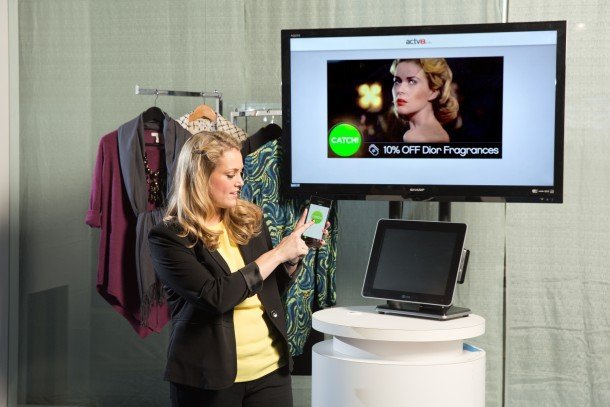
No More Crickets: Intel Starts Talking Digital Signage After Long Silence
January 14, 2014 by Dave Haynes
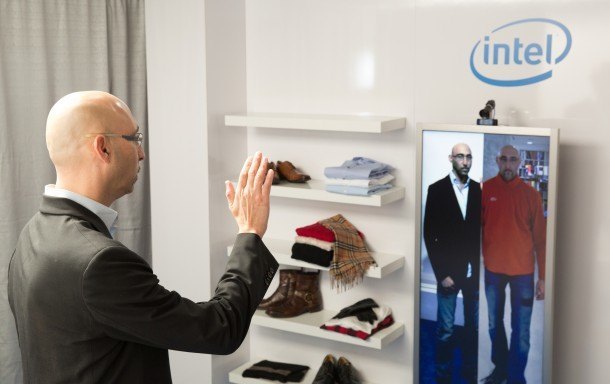
Talk to the hand, boys
It has been more than half a year since Intel announced it was making the curious move of getting into the digital signage content management system, a field already as crowded as the line-up outside a Walmart on Black Friday.
Then the cricket sounds started. And persisted. For the better part of seven months.
I gave up asking Intel’s Jose Avalos – the frontman for its digital signage effort – to do a Q&A.
On the retail show that attracts tech-centric retail people from across the continent, Intel is showing its Retail Client Manager and a series of “solutions” to what ails retail.
Says the release:
Intel Corporation is showcasing new technologies that are available in market today, helping retailers make better use of big data while providing more engaging and personalized experiences for consumers who make purchases at home or in-store.
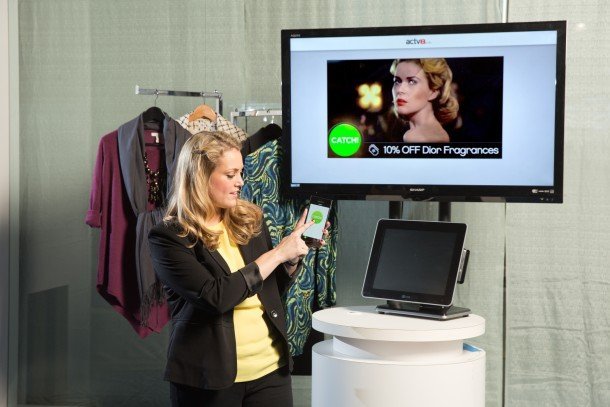
First, a second screen thing:
With Intel-based Shopping Anywhere, consumers can intuitively shop the looks from their favorite television programs right from their couch. By using the Intel Retail Client Manager, along with technology from NCR* and ACTV8.ME* loaded on a tablet or smartphone, viewers can identify the clothing an actor or actress is wearing in an episode and receive special offers, play games to earn digital currency, or purchase the outfit instantly and have it delivered directly to their door.
Note: Would have to see this to pass much judgement, but shopping from the couch is hardly a revelation, and I really don’t want anything they wear on Orange Is The New Black.
Then the old virtual mirror parlor trick:
If a consumer prefers to bring the ease of online shopping with them in-store, the Intel® Core™ i7-based MemoryMirror* full-length, digital “mirror,” allows store shoppers to virtually try on multiple outfits, and view and compare previous looks on the mirror or via smartphone or tablet. The MemoryMirror uses Intel integrated graphics technology to create avatars of the shopper wearing various clothing that can be shared with friends to solicit feedback or viewed instantly to make an immediate in-store purchase.
Note: Again, strangely familiar, though the previous looks/cached views might be new-ish.
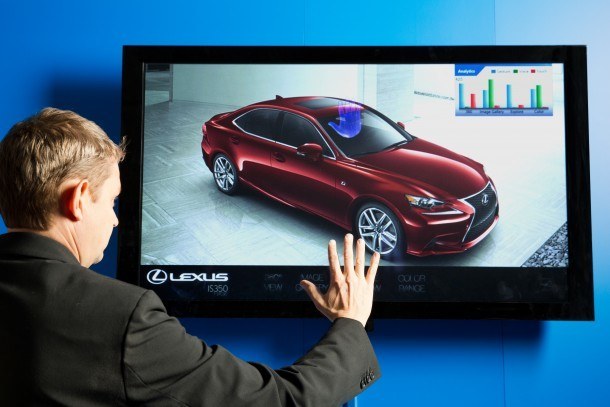
Then gesture: Technology can also deliver a more interactive experience in larger retail settings, such as the car dealership, by offering the benefits and ease of online exploring. The Intel-based Intuitive Product Customization uses the power of gesture recognition to seamlessly blend the online and in-dealership experience. With Intuitive Product Customization, consumers use hand gestures to browse and interact with digital product information, including various paint colors, interior options and add-on features to customize their car and visualize with their desired options before ordering their car.
Note: The gesture thing is, of course, because using a touchscreen is so foreign to modern consumers. Lord.
Tablets and phones: Today’s tech-savvy consumers have the option to shop whenever and wherever they want, including on mobile devices. Intel is also showing a range of tablets for in-store retail settings that enable a more proficient and knowledgeable sales force, as well as a more efficient and readily available checkout process. By using Intel-based mobile solutions, retailers can improve a range of functions for sales staff, including mobile point of sale, client service, inventory research, concierge services and management dashboards.
Video analytics: Intel Context Aware Marketing makes digital signage more effective by dynamically changing advertisements displayed on a sign based on the age and gender of the person viewing the sign. When a consumer walks by an Intel® Core-based digital sign, the Intel Advertising Framework technology can analyze information including weather trends, social media, and the shopper’s phone data to change the content and user interface to make it more relevant and personalized to the viewer. Intel Context Aware Marketing can also be tied to store inventory systems to display only advertisements for products currently available in-store.
Note: So Cognovision became Intel AIM Suite and then became Intel Context Aware Marketing. It still doesn’t change how little interest there is in the inexact capability (or point) of serving ads based on gender, especially when shoppers behave badly and move in mismatched pairs.
Better video analytics: Waiting in long, frustrating checkout lines could even become a thing of the past by effectively making use of big data. Intel-based Dynamic Staffing Optimization (DSO) can measure and analyze data including real-time traffic in and out of the store, queue length, the number of active and open registers, historical transaction data, and labor scheduling information to provide predictive recommendations to open or close registers based on expected customer traffic.
Note: Good. Check. Like.
Intel has also announced “one of the first full turnkey services providers offering Intel Retail Client Manager” software, Salt Lake City-based Keystone Enterprise Services. The company is big on satellite and IP-TV but will now roll in support for RCM.
“We are excited to be one of the first turnkey managed service providers in the Digital Signage marketplace to be able to leverage these Intel technologies in our offerings,” said Keven Cahoon, CEO of Keystone. “This news means that, as a retailer or product manufacturer, you now have available to you a turnkey managed network service that can help you gain from these exciting Intel® technologies. Whether the application is for communicating to shoppers, or with a workforce on the retail floor — with Keystone services you can focus even more on your content, messaging and marketing.”
I know. Never heard of them either.
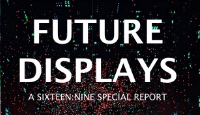


Leave a comment